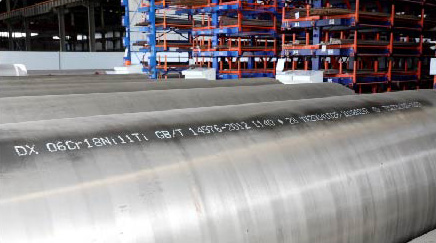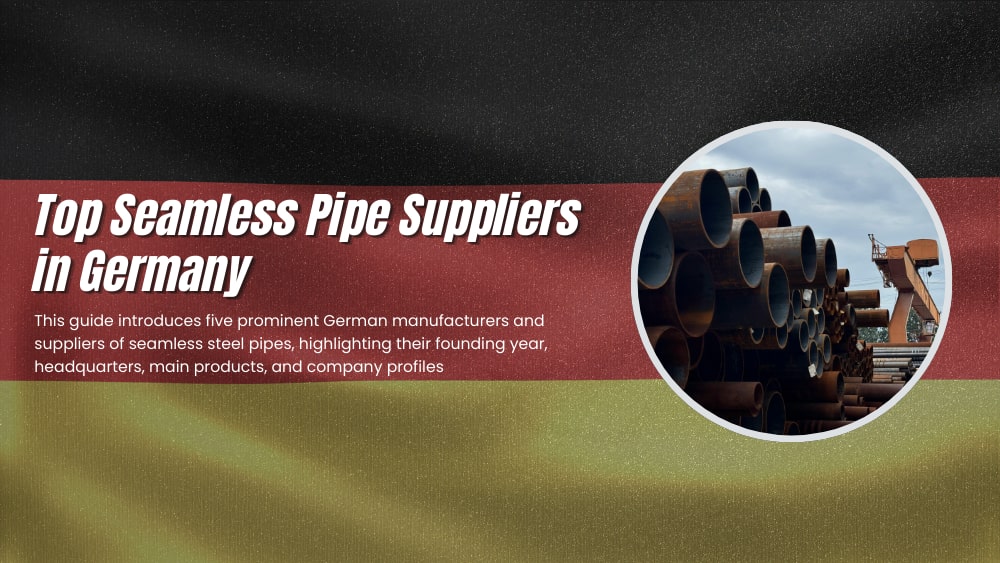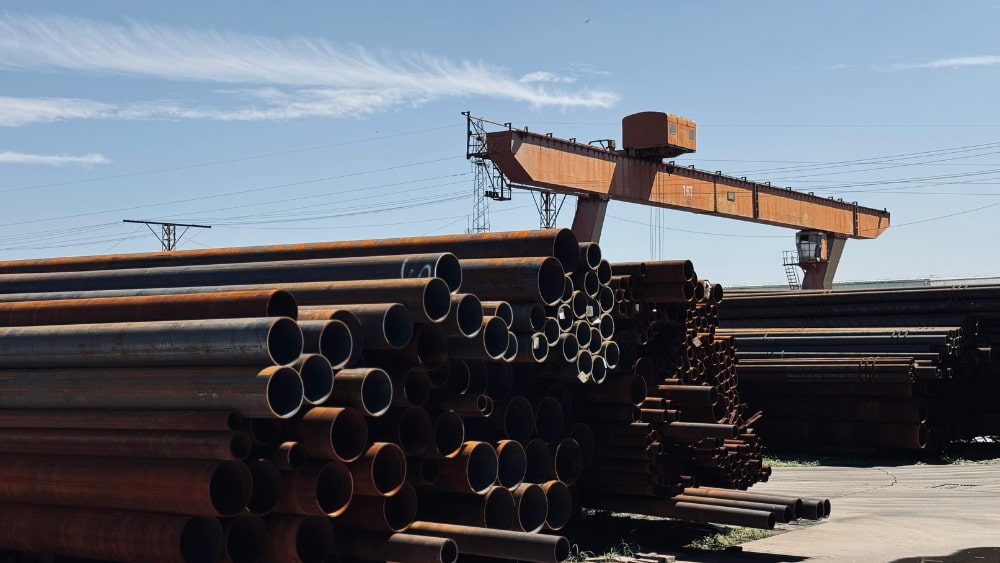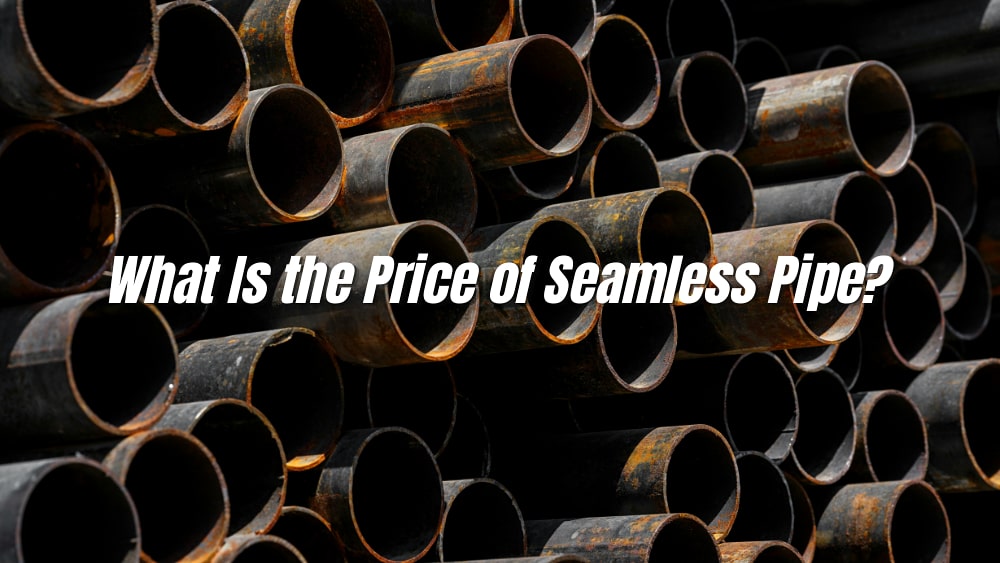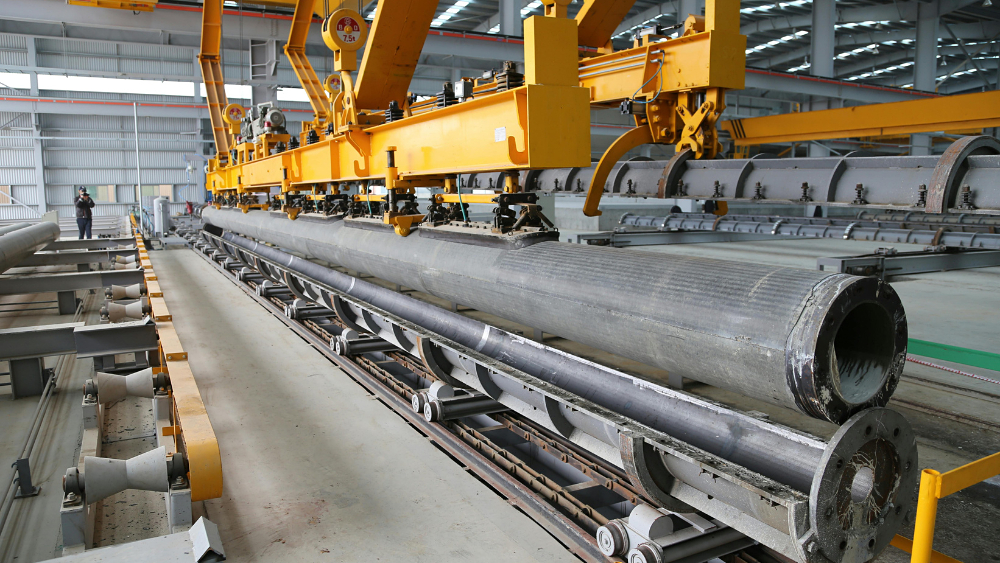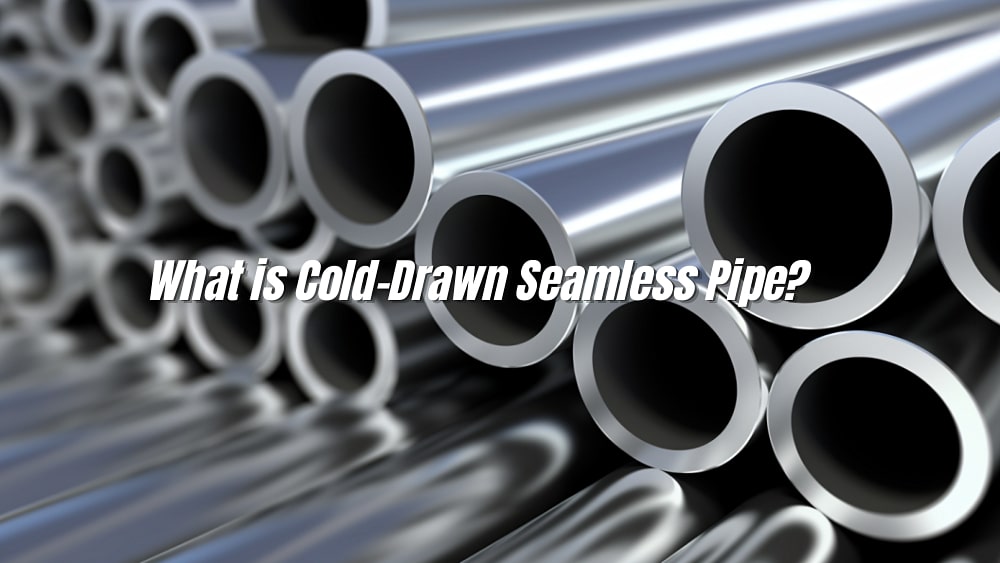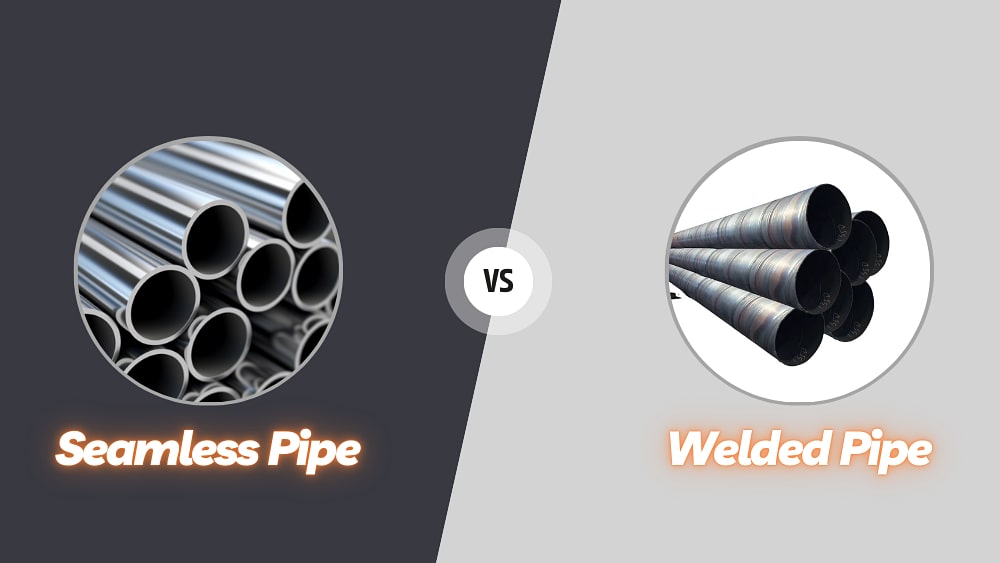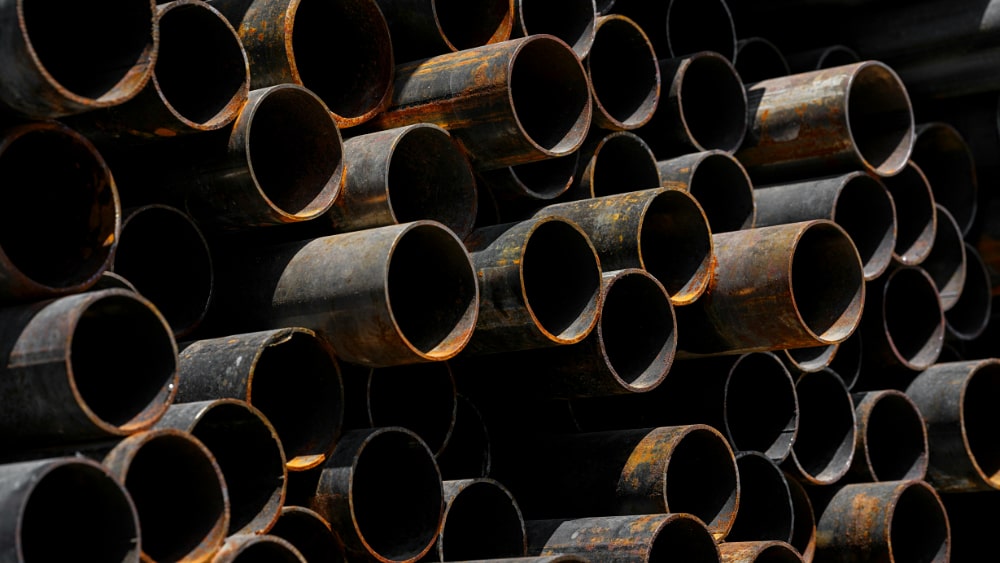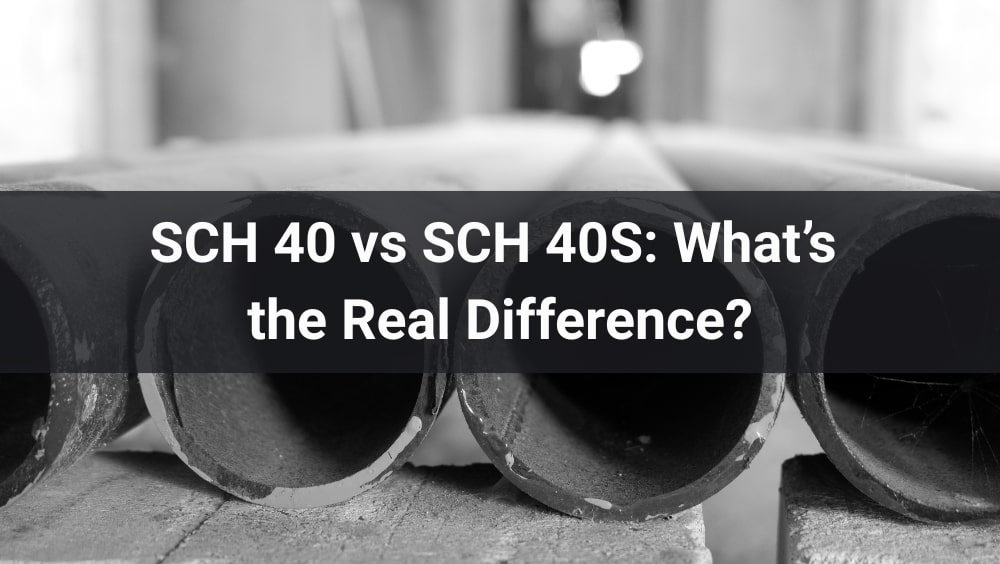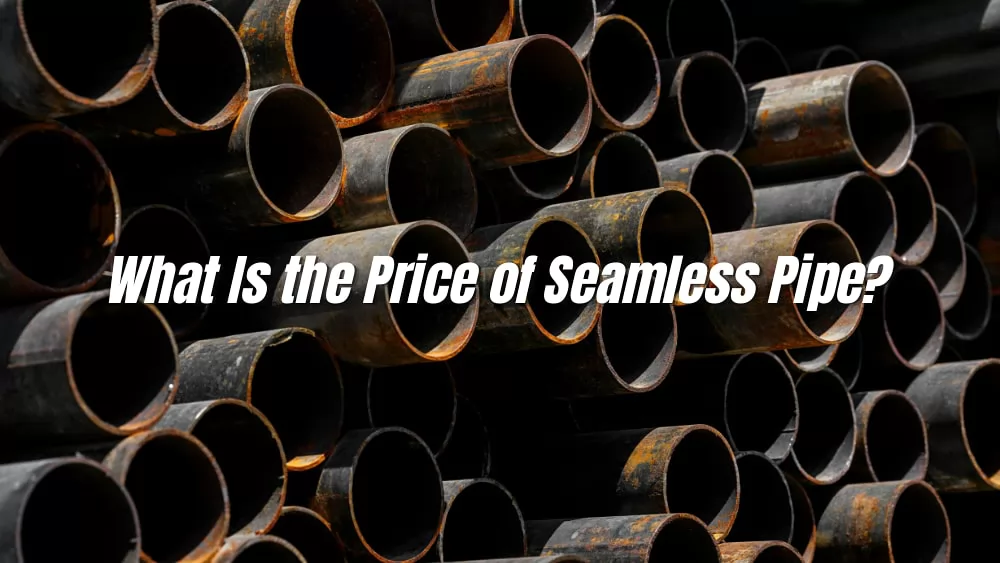
Are you considering purchasing seamless steel pipe but struggling to determine a reasonable price range in the ever-volatile international market? From conventional structural pipes around $600 per ton to high-strength alloy pipes exceeding $1,500 per ton, and even specialized custom pipes requiring "price quote upon drawing," the wide price range for seamless pipes can be confusing for many buyers.
Should you choose the more cost-effective standard hot-rolled pipe, or invest in high-end precision pipes with greater pressure resistance and higher precision, a more secure long-term solution? What factors can cause seamless pipe prices to vary so dramatically? If you're wondering these questions, you're not alone. This article will break down the logic behind pricing and help you quickly determine the seamless pipe product and price range that best suits your needs at this stage of your purchase.
As of the third quarter of 2025, global seamless steel pipe prices have generally shown a fluctuating upward trend. Export orders for seamless pipe have grown significantly, driven by rising raw material costs (particularly the rebound in iron ore and coke prices) and the continued expansion of energy and infrastructure projects in the Middle East and Southeast Asia. In the European and American markets, prices for American standard API pipe and hot-rolled structural seamless pipe have fluctuated between $950 and $1,150 per ton, an increase of approximately 8% year-on-year.
In the Middle East and South America, quotations for some oil and gas casing products have exceeded $1,200 per ton due to increased demand for oil and gas exploration. However, prices in Southeast Asian and Indian markets have remained relatively stable, generally ranging between $850 and $980 per ton, driven by the release of local production capacity. Future price trends will continue to be influenced by global manufacturing activity, geopolitical stability, and quota policies in exporting countries.
| Metal Type | Standard | Length | Wall Thickness | Outer Diameter (OD) | Price Range (USD/ton) |
|---|---|---|---|---|---|
| Carbon Steel | ASTM A106 | 6m | 3.2mm | 21.3mm | $720 – $780 |
| Carbon Steel | ASTM A106 | 6m | 4.5mm | 33.7mm | $710 – $770 |
| Carbon Steel | ASTM A106 | 6m | 6mm | 42.4mm | $700 – $760 |
| Carbon Steel | ASTM A106 | 6m | 8mm | 48.3mm | $690 – $750 |
| Carbon Steel | ASTM A106 | 6m | 10mm | 60.3mm | $680 – $740 |
| Carbon Steel | ASTM A106 | 6m | 12mm | 76.1mm | $670 – $730 |
| Carbon Steel | GB/T 8163 | 6m | 8mm | 89mm | $700 – $780 |
| Carbon Steel | GB/T 8163 | 6m | 12mm | 114mm | $690 – $770 |
| Carbon Steel | API 5L X42 | 12m | 6.4mm | 114.3mm | $750 – $850 |
| Carbon Steel | API 5L X52 | 12m | 8mm | 168.3mm | $790 – $880 |
| Carbon Steel | API 5L X60 | 12m | 10mm | 219.1mm | $820 – $920 |
| Carbon Steel | API 5L X65 | 12m | 12.7mm | 273mm | $860 – $950 |
| Carbon Steel | API 5L X70 | 12m | 14.2mm | 323.9mm | $880 – $980 |
| Alloy Steel | ASTM A335 P11 | 6m | 5mm | 33.7mm | $1,080 – $1,200 |
| Alloy Steel | ASTM A335 P11 | 6m | 6mm | 48.3mm | $1,100 – $1,250 |
| Alloy Steel | ASTM A335 P22 | 6m | 8mm | 60.3mm | $1,150 – $1,300 |
| Alloy Steel | ASTM A335 P5 | 6m | 10mm | 76.1mm | $1,200 – $1,350 |
| Alloy Steel | DIN 2391 ST52 | 6m | 3mm | 42mm | $950 – $1,150 |
| Alloy Steel | DIN 2391 ST52 | 6m | 4mm | 60mm | $970 – $1,200 |
| Boiler Tube | ASTM A192 | 6m | 2.5mm | 31.8mm | $920 – $1,100 |
| Boiler Tube | ASTM A179 | 6m | 2mm | 25.4mm | $900 – $1,050 |
| Stainless Steel | ASTM A312 TP304 | 6m | 2mm | 25.4mm | $3,600 – $4,500 |
| Stainless Steel | ASTM A312 TP304 | 6m | 3mm | 48.3mm | $3,800 – $4,700 |
| Stainless Steel | ASTM A312 TP316L | 6m | 2mm | 33.7mm | $4,200 – $5,000 |
| Stainless Steel | ASTM A312 TP316L | 6m | 3mm | 60.3mm | $4,300 – $5,200 |
| Oil Casing | API 5CT J55 | 9.3m | 6.45mm | 114.3mm | $1,100 – $1,300 |
| Oil Casing | API 5CT N80 | 9.3m | 7.5mm | 139.7mm | $1,200 – $1,400 |
| Oil Casing | API 5CT L80 | 9.3m | 9.19mm | 177.8mm | $1,300 – $1,500 |
| Heavy Wall Pipe | Custom Spec | 6m | 25mm | 323mm | $1,350 – $1,700 |
| Precision Steel | EN 10305-1 | 6m | 2mm | 30mm | $1,100 – $1,350 |
If you’re considering purchasing seamless pipes, understanding the various factors that influence their cost can help you budget effectively and choose the right product for your needs. Seamless pipe prices can vary widely depending on several key elements — from raw materials to manufacturing methods, and beyond. Let’s break down the main cost drivers so you can make a smarter investment.
The primary factor affecting seamless pipe costs is the raw material price. Seamless pipes are made from different grades of steel, such as carbon steel, alloy steel, and stainless steel. The price of these base metals fluctuates constantly due to global market demand, availability of iron ore, energy prices, and geopolitical factors. For instance, stainless steel pipes, especially those made with high nickel content like 316L, can cost 3 to 4 times more per ton than carbon steel pipes. Tracking raw material prices closely helps you anticipate price shifts in seamless pipes.
Seamless pipes require specialized equipment and production techniques, including hot rolling, cold drawing, and heat treatment.
Hot rolled seamless pipes generally cost less but offer lower precision.
Cold drawn pipes have tighter tolerances and smoother finishes, which add approximately 10-30% to the cost.
Additional processes like heat treatment or normalization further increase production costs by improving mechanical properties.
The scale and sophistication of the machinery used also matter — large industrial mills with advanced automation tend to produce higher-quality pipes but at a higher price point.
Dimensions like outer diameter (OD), wall thickness, and length directly impact the cost: thicker walls and larger diameters mean more material consumption and energy usage, driving prices up. For example, doubling the wall thickness may increase the pipe weight—and cost—by almost double. Custom lengths or non-standard dimensions usually come with a premium due to lower production efficiency.
Higher-grade steel and compliance with rigorous standards (e.g., API 5L, ASTM A335, EN 10216) require stricter quality control and additional testing, including ultrasonic inspection, hydrostatic tests, and certification. These quality assurance steps add to the cost but are crucial for demanding applications like oil & gas pipelines or high-pressure boilers.
Many seamless pipes receive surface treatments such as galvanizing, anti-corrosion coatings, or specialized paint to extend service life. These treatments can add anywhere from $100 to $500 per ton depending on the method and thickness of the coating.
Bulk orders typically benefit from volume discounts as fixed setup costs and machining times are spread over larger quantities. Conversely, small or urgent orders may carry premiums due to increased labor, setup, and expedited shipping fees.
Where the pipes are manufactured also affects cost. Pipes from countries with lower labor and energy costs (e.g., China, India, Turkey) tend to be cheaper upfront. However, international shipping fees, customs duties, and longer lead times can offset those savings depending on your location.
Faced with volatile seamless pipe prices and market conditions, how can you purchase high-quality seamless steel pipe at the best price? The following three practical tips can help you effectively control costs and improve your purchasing value:
Buying in bulk often significantly reduces the unit cost of seamless pipe. Suppliers typically offer tiered pricing based on volume, especially for standard specifications on the MS seamless pipe price list. Bulk orders can offer discounts of 5%-15%. Furthermore, combining orders for multiple projects can enhance bargaining power.
Not all projects require the highest-grade seamless steel pipe. Understanding your project's true pressure, temperature, and corrosion resistance requirements will help you select the appropriate material and standard, avoiding overpriced seamless steel pipe due to performance overkill. For example, for ordinary structural pipe, there's no need to purchase alloy pipe designed for high-pressure environments.
China is one of the world's leading producers of seamless steel pipe, boasting mature manufacturing technology and a well-developed industrial chain. Working with Chinese suppliers generally results in more competitive seamless steel pipe prices, especially for bulk orders. Many Chinese manufacturers also offer customization services and export experience, helping overseas customers reduce procurement and logistics costs while maintaining consistent quality.
Seamless pipe price lists from different suppliers can vary significantly, especially when sourcing internationally. Before placing an order, it's recommended to request quotes from at least three to five qualified suppliers and confirm whether their quotes include hidden costs such as shipping, taxes, and processing fees. Comparing prices from multiple suppliers not only helps avoid being locked into a high price but also allows for effective negotiation.
While first-tier international brands offer guaranteed product quality, second-tier brands or suppliers facing inventory pressures often offer more favorable seamless steel pipe prices while maintaining quality. Furthermore, local warehouses may offer more attractive inventory at competitive prices, saving on shipping and storage costs. This channel can be a particularly cost-effective option, especially when deadlines are tight.
If you are a factory, contractor, or project company anticipating ongoing purchases of seamless steel pipe products, establishing a long-term partnership with a supplier through annual or quarterly purchase agreements will help lock in optimal seamless pipe costs. Suppliers often offer exclusive pricing, priority delivery, and credit terms based on annual purchase volume, effectively alleviating cash flow pressure while ensuring a stable supply.
The key to sourcing high-quality, affordable seamless steel pipes lies in choosing the right supply channel. The following channels can often help you secure competitive prices and reliable product quality:
China is the world's largest producer of seamless steel pipes, boasting sophisticated production technology, abundant raw materials, and highly automated factories. Seamless steel pipe manufacturers in Tianjin, Shandong, Jiangsu, and other regions offer a wide range of standard specifications, with prices typically 20%-40% lower than those in the European and American markets. Through platforms like Alibaba, Made-in-China.com, and Global Sources, you can directly contact reputable manufacturers to obtain seamless steel pipe price lists and sample quotes.
In some countries and regions, large local steel markets or warehouses offer a wide variety of specifications of MS seamless pipe and medium- and low-pressure seamless pipe. Sourcing local spot stock offers the advantages of short lead times and fast shipping, making it ideal for time-sensitive projects. Furthermore, some stockists offer preferential prices during inventory clearance, offering excellent value for money.
For small and medium-sized enterprises, entrusting experienced steel trading companies with centralized procurement is a good way to reduce seamless steel pipe costs. Traders typically have access to a large supply base and can negotiate lower prices through scale. They also handle quality control, logistics coordination, and customs clearance, saving time and effort.
Q1: How much more expensive is seamless steel pipe compared to welded pipe?
Seamless pipes typically cost 30% to 100% more than welded pipes, depending on the material grade and application.
Q2: Why is seamless steel pipe more expensive?
Due to complex manufacturing processes, higher quality standards, strict material selection, and more waste during production.
Q3: What factors influence the seamless steel pipe price?
Q4: What is the typical price range for seamless carbon steel pipes?
Q5: Is seamless pipe necessary for all projects?
No. For low-pressure systems and non-critical applications, cheaper welded pipes may be sufficient.
Q6: Can bulk purchasing reduce the seamless pipe cost?
Yes, bulk orders usually qualify for volume discounts, especially on standard-sized products.
Q7: Where can I buy seamless pipes at a competitive price?
Understanding seamless steel pipe pricing and how it reflects the production process, material grade, dimensions, and application will help you make more informed purchasing decisions amidst the myriad options available. While seamless steel pipe prices range widely, from standard to industrial grades, each price range represents a unique performance value proposition.
If you're still hesitating over the hundreds of seamless pipe options available, it's worth understanding common pipe sizes and standard types to further clarify your project requirements. For projects requiring high temperatures, high pressures, or corrosive environments, choosing high-strength seamless steel pipe that meets industry standards is undoubtedly a safer choice.
Whether you're engaged in petrochemicals, construction engineering, or heavy industrial manufacturing, a comprehensive understanding of the relationship between seamless steel pipe cost and performance will ensure your next purchase is both cost-effective and reliable for the long term.
Your Name*
Your Email*
